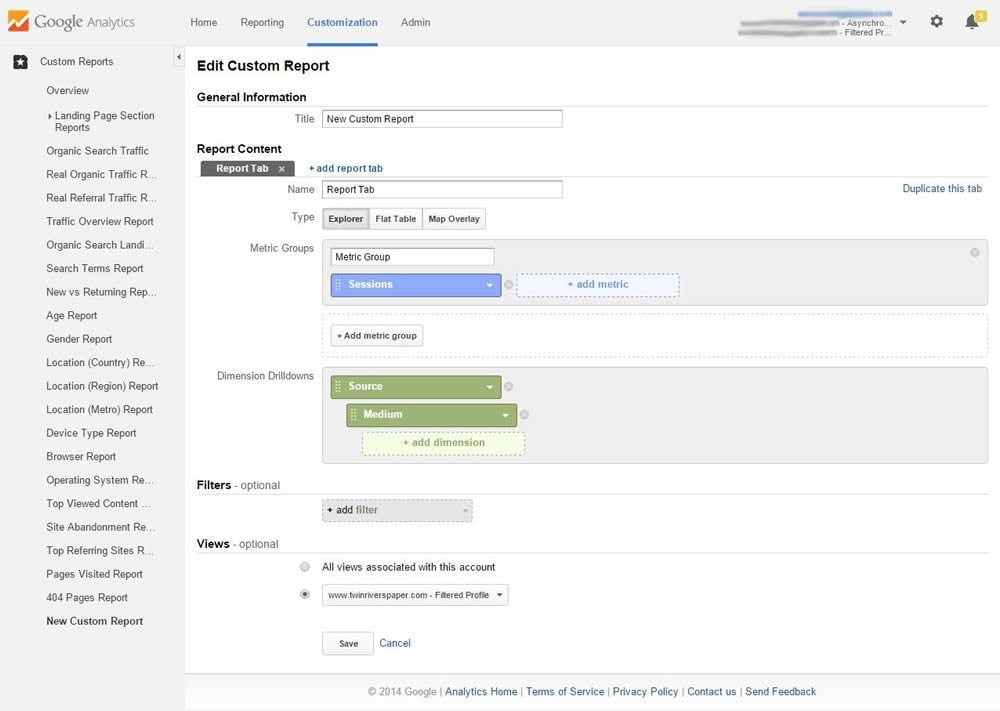Maximize Reporting Precision With Secondary Dimension in Google Analytics
Comprehending how to make best use of reporting accuracy with additional measurements in Google Analytics can considerably boost the depth of insights stemmed from data analysis. By integrating second dimensions purposefully, marketers can uncover hidden patterns and correlations that may not be promptly apparent when assessing primary metrics alone. This nuanced approach allows a much more detailed understanding of user habits and project efficiency, leading the way for more targeted and effective decision-making. The use of additional dimensions holds the essential to unlocking a riches of useful information that can change the performance of electronic advertising strategies.
Understanding Second Measurements in Google Analytics
To enhance information analysis and gain deeper insights right into individual behavior, understanding second measurements in Google Analytics is crucial. Second measurements permit individuals to sector and additionally dissect data beyond the main measurement selected. By integrating additional dimensions, analysts can fine-tune their records to expose more in-depth info concerning user communications on a site. While the key measurement may show the overall number of web page views, including a secondary measurement such as 'source/medium' can give understandings into where the traffic originated from. This additional layer of details enables marketing experts to examine the effectiveness of various advertising and marketing projects or networks in driving website traffic to the internet site.
Additionally, understanding secondary measurements is vital for producing much more customized records tailored to certain company goals. By selecting the right mix of secondary and primary dimensions, analysts can discover patterns, trends, and connections that could otherwise stay hidden. This nuanced strategy to information evaluation empowers services to make informed choices based upon a comprehensive understanding of customer actions across numerous measurements.

Just How to Apply Secondary Dimensions
When leveraging secondary measurements in Google Analytics, the useful application involves picking certain information specifications to further refine understandings past the main measurement's scope. To apply second measurements successfully, start by accessing the record or dataset where you wish to dive deeper into the data. Within Google Analytics, locate the main dimension that you are currently evaluating. When identified, click the dropdown menu classified "Second Dimension." This activity will reveal a checklist of added parameters that can be contributed to your analysis. Choose the secondary measurement that straightens with your logical objectives, such as 'Source/Medium,' 'Device Category,' or 'Area.' By selecting an additional dimension, you can get extra detailed understandings into user habits, demographics, or procurement networks. Keep in mind that additional measurements help offer context and granularity to your primary measurement data, enabling you to remove even more actionable and significant understandings from your Google Analytics reports. my sources
Leveraging Secondary Dimensions for Insights
Utilizing second dimensions in Google Analytics enables a more detailed evaluation of data, supplying useful understandings beyond the primary measurement's scope. By leveraging secondary measurements, customers can dive deeper into the efficiency metrics of their internet site or application, revealing hidden patterns and fads that might not be quickly evident when just checking out primary measurements.
One key advantage of utilizing secondary dimensions is the capability to sector and filter data much more exactly. This can aid analysts and marketing experts much better comprehend the behavior of particular individual sectors, such as brand-new visitors versus returning visitors, or web traffic originating from different geographical locations.
In addition, additional dimensions make it read more possible for individuals to compare and contrast various information points within the exact same record, offering an extra holistic sight of performance (Secondary Dimension in Google Analytics). As an example, matching the primary measurement of landing pages with second measurements like demographics or tools can expose which web pages are most reliable in involving individuals on various tools or from different market teams.
Essentially, leveraging secondary dimensions in Google Analytics equips individuals to draw out richer insights from their data, causing more educated decision-making and ultimately, improved efficiency.
Finest Practices for Second Measurements
When examining information in Google Analytics, incorporating secondary measurements effectively enhances the depth of insights obtained from the key metrics. Picking relevant second dimensions aids in giving context and a clearer understanding of the information being taken a look at.
Furthermore, it is suggested to limit the number of additional measurements made use of in a single report to avoid overwhelming the evaluation with too much details. Concentrating on a couple of vital additional dimensions at once can cause more workable and focused understandings. Additionally, think about try out various mixes of second and primary dimensions to discover special patterns and patterns that might not be obvious Read Full Report when considering the information alone.
Advanced Analysis Strategies With Additional Dimensions
Discovering complex information partnerships through the calculated application of secondary measurements can unveil nuanced understandings that boost the deepness of evaluation in Google Analytics. By incorporating second dimensions with key data collections, advanced analysis methods can be utilized to draw out important information.
In addition, second dimensions can improve the analysis of conversion paths by giving additional context. Comprehending the different touchpoints a customer connects with prior to converting can be essential in maximizing the customer trip - Secondary Dimension in Google Analytics. By using additional dimensions to dig right into specifics such as traffic resources or devices used, marketing professionals can tailor strategies to target high-converting channels properly
Final Thought

To improve information analysis and gain much deeper understandings right into individual habits, comprehending secondary dimensions in Google Analytics is important - Secondary Dimension in Google Analytics. Additional dimensions permit customers to section and better study data beyond the key dimension chosen. While the primary measurement may display the overall number of page sights, adding a second measurement such as 'source/medium' can give insights right into where the website traffic stemmed from.When leveraging additional measurements in Google Analytics, the practical application involves picking certain information parameters to additional refine insights past the primary dimension's range. Remember that second dimensions help give context and granularity to your primary measurement information, allowing you to extract more purposeful and actionable understandings from your Google Analytics reports